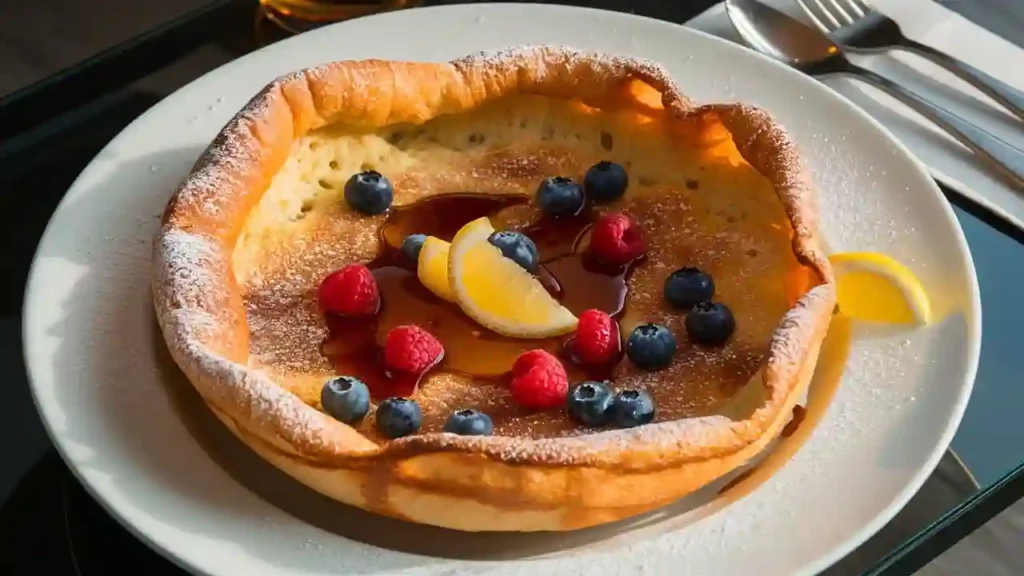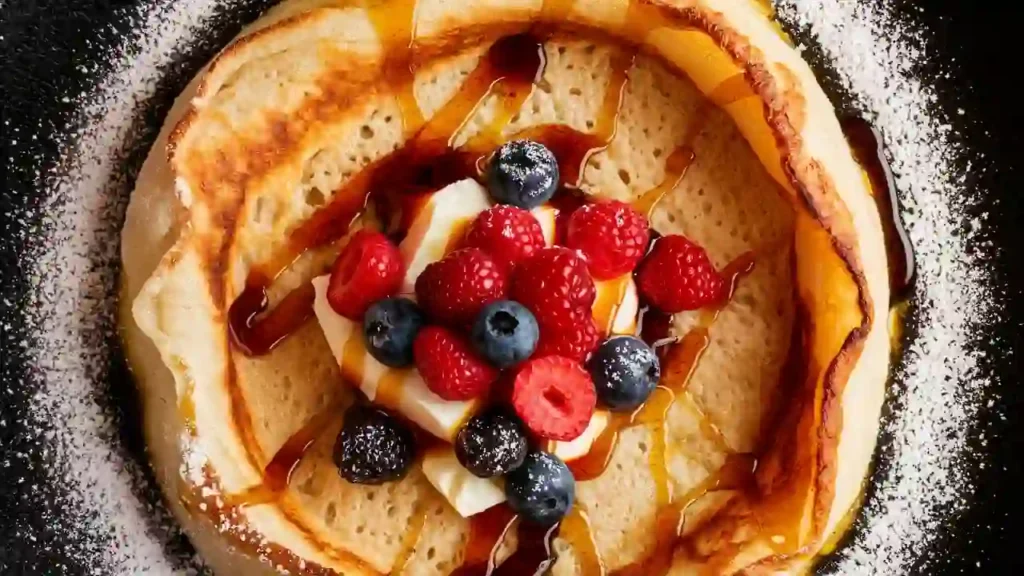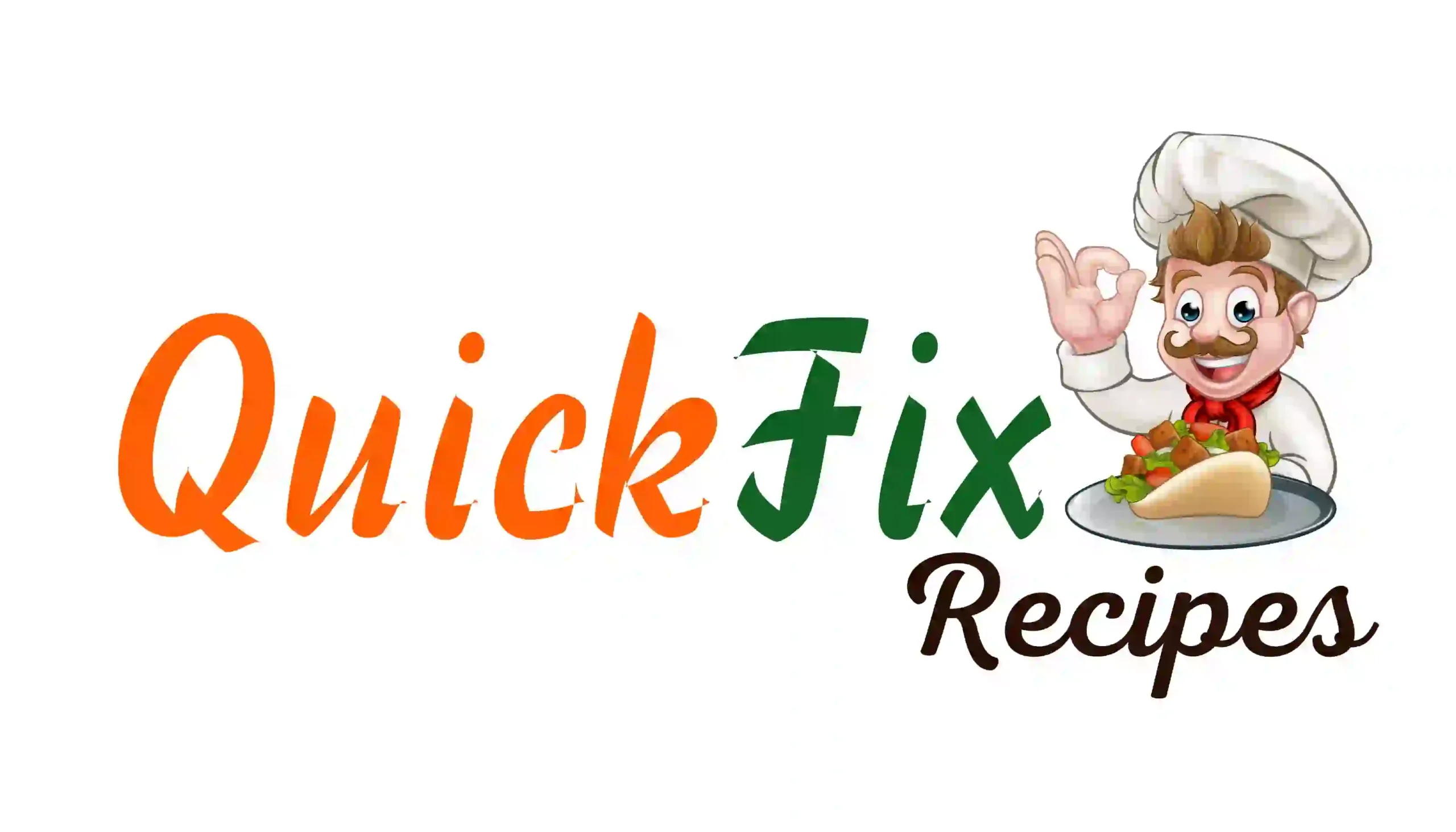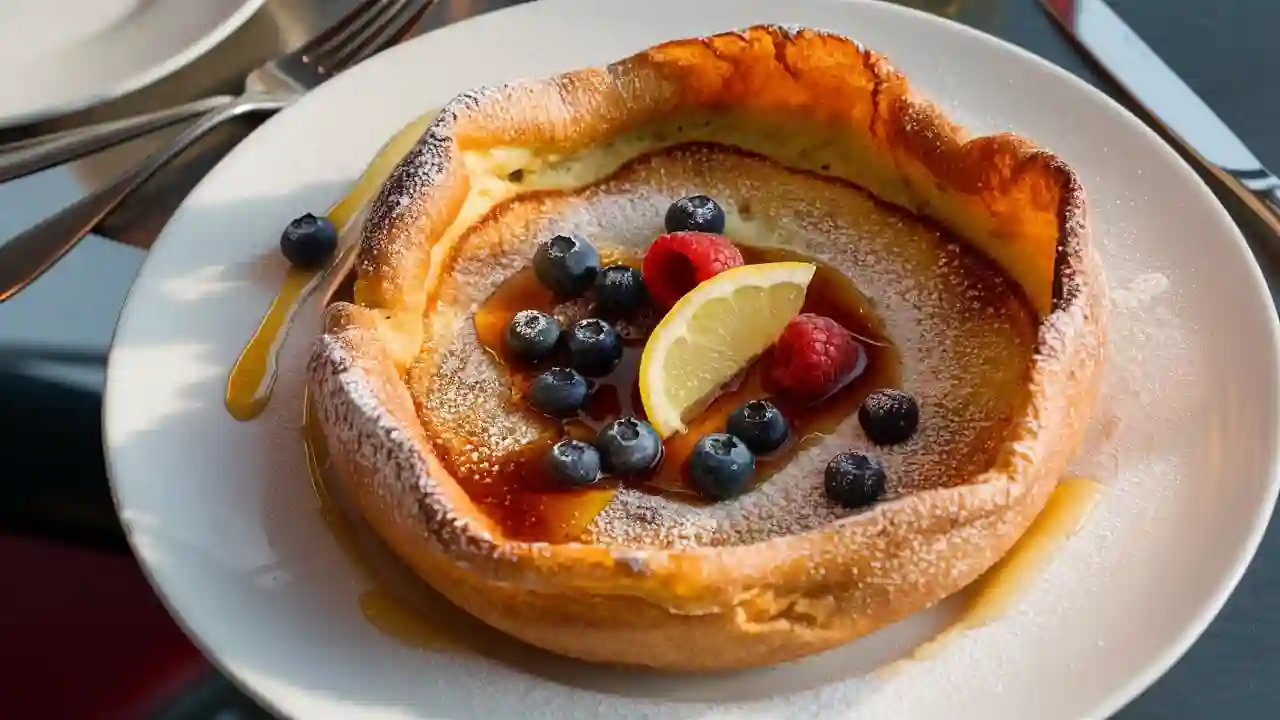Last Updated on March 17, 2025 by Lucas
Ever craved a breakfast that’s both effortless and delightful? Enter the German Pancake, also known as a Dutch Baby. With just a handful of ingredients—eggs, milk, flour, and butter—you can whip up this oven-baked marvel in no time. Its golden, puffy appearance and versatile toppings make it a family favorite. Ready to elevate your breakfast game?
What Is a German Pancake (aka Dutch Baby)?
The History and Origin of German Pancakes
Despite its name, the German pancake, also known as a Dutch baby, originated in the United States in the early 1900s. It is believed to have been created by German immigrants who modified traditional American pancake recipes.
Difference Between a German Pancake and Traditional Pancakes
German pancakes differ from traditional pancakes in several ways:
- Cooking Method: Traditional pancakes are cooked on a stovetop, while German pancakes are baked in the oven, resulting in a puffed, golden appearance.
- Texture: German pancakes have a custard-like center with crispy edges, whereas traditional pancakes are uniformly fluffy.
- Size and Presentation: A German pancake is typically larger and served as a single dish, making it ideal for sharing.
Why It’s Also Called a Dutch Baby
The term “Dutch baby” is attributed to a Seattle restaurant called Manca’s Cafe, where the owner’s daughter coined the name. The “Dutch” in this context is believed to be a corruption of “Deutsch,” reflecting the dish’s German-American roots.
Ingredients You’ll Need for the Perfect Puffy Pancake
Creating a delectable German pancake requires a few essential ingredients and the right cookware. Here’s a breakdown to guide you:

Basic Pantry Staples
To craft your pancake, gather these fundamental items:
- Flour: All-purpose flour provides the structure for your pancake.
- Eggs: They contribute to the pancake’s custard-like texture.
- Milk: Whole milk offers richness, but any milk will suffice.
- Butter: Melted butter adds flavor and aids in achieving a golden hue.
- Vanilla Extract: This enhances the overall flavor profile.
Optional Toppings
Customize your pancake with these delightful additions:
- Powdered Sugar: A gentle sprinkle brings a hint of sweetness.
- Maple Syrup: Classic and comforting.
- Lemon Wedges: Their zestiness balances the pancake’s richness.
- Fresh Fruit: Berries, sliced bananas, or apples provide freshness and color.
Best Type of Skillet to Use
The choice of skillet influences your pancake’s outcome:
- Cast Iron Skillet: Renowned for even heating and heat retention, it ensures your pancake cooks uniformly.
- Oven-Safe Pan: If using a non-cast iron pan, ensure it’s oven-safe to withstand high baking temperatures.
Tip: Preheating your skillet in the oven before pouring in the batter promotes a well-risen and crispy-edged pancake.
By assembling these ingredients and selecting the appropriate cookware, you’re set to create a memorable German pancake experience.
Step-by-Step Guide to Make the Easiest German Pancake
Creating a delightful German pancake is a straightforward process that yields a dish both visually impressive and delicious. Let’s walk through each step to ensure your pancake turns out perfectly.
Preparing the Batter: Whisk vs. Blender Method
You have two effective options for preparing the batter:
- Whisk Method:
- In a large bowl, whisk together eggs, milk, flour, salt, and vanilla extract until smooth.
- This method allows you to feel the texture and ensure no lumps remain.
- Blender Method:
- Combine eggs, milk, flour, salt, and vanilla extract in a blender.
- Blend on medium speed for about 30 seconds until the mixture is smooth.
- This approach is quick and minimizes the effort of manual whisking.
Tip: Both methods are effective. Choose the one that best fits your preference for texture and convenience.
Preheating the Skillet and Oven for That Signature Puff
Achieving the characteristic puff and crisp edges of a German pancake requires proper preheating:
- Oven Preheating:
- Set your oven to 425°F (218°C) and allow it to preheat fully.
- Preheating ensures the pancake cooks evenly and attains the desired rise.
- Skillet Preheating:
- Place a cast-iron skillet or oven-safe pan in the oven as it preheats.
- This step heats the skillet, contributing to a crispy base and edges.
Safety Reminder: Use oven mitts when handling the hot skillet to prevent burns.
Baking to Perfection: Golden, Fluffy, Crispy Edges in 20 Minutes
With your batter prepared and skillet preheated, it’s time to bake:
- Butter the Skillet:
- Carefully remove the hot skillet from the oven.
- Add 2 tablespoons of unsalted butter, swirling to coat the bottom and sides.
- Pour and Bake:
- Pour the batter into the buttered skillet, ensuring even coverage.
- Return the skillet to the oven and bake for 20-25 minutes, or until the pancake is puffed and golden brown around the edges.
Visual Cue: The pancake will puff up significantly during baking. Once done, it will deflate slightly, indicating it’s ready to serve.
By following these steps, you’ll create a German pancake that’s both visually stunning and delicious—a true breakfast treat.

Topping Ideas for the Ultimate German-Style Breakfast
German pancakes, or Dutch babies, bring a delicious twist to classic pancakes. Their versatility makes them perfect for a variety of tasty toppings. Check out these ideas to elevate your next breakfast:
Classic Toppings
- Powdered Sugar and Lemon: A simple dusting of powdered sugar paired with a squeeze of fresh lemon juice offers a sweet and tangy combination that complements the pancake’s flavor.
Sweet Variations
- Fresh Berries and Whipped Cream: Top your pancake with a mix of berries like strawberries, blueberries, or raspberries, and add a dollop of whipped cream for a refreshing and indulgent treat.
- Maple Syrup and Butter: For a classic approach, drizzle warm maple syrup over the pancake and add a pat of butter, allowing it to melt into the folds.
- Chocolate Drizzle: Melted chocolate or Nutella adds a rich, sweet touch. Drizzle over the pancake and, if desired, sprinkle with chopped nuts for added texture.
Savory Options
- Cheese and Herbs: Sprinkle shredded cheese and fresh herbs like chives or parsley over the pancake for a savory flavor profile.
- Sautéed Vegetables: Topped with sautéed mushrooms, spinach, or bell peppers, this option adds a hearty and nutritious element to your meal.
Additional Suggestions
- Fruit Compotes: Warm fruit compotes, such as apple or berry, provide a sweet and slightly tart contrast to the pancake’s richness.
- Nuts and Honey: Toasted nuts like almonds or pecans, drizzled with honey, offer a crunchy and sweet topping.
Experimenting with these toppings allows you to customize your German pancake experience to your liking. Whether you prefer sweet or savory, there’s a combination to satisfy every palate.
Tips, Tricks, and Variations for Foolproof German Pancakes
Achieving the perfect German pancake, also known as a Dutch baby, is within your reach. With a few thoughtful tips and variations, you can elevate this dish to suit your preferences. Here’s how:
1. Why Preheating Is Essential for Puffiness
Preheating your skillet and oven is crucial for achieving the signature puffiness of German pancakes. Here’s why:
- Skillet Heating: Placing a cast-iron skillet or oven-safe pan in the oven while it preheats ensures the pan becomes uniformly hot. Pouring the batter into a preheated pan creates an immediate sizzle, promoting a rapid rise and forming the desired crispy edges.
- Oven Preheating: A thoroughly preheated oven maintains consistent temperature, allowing the pancake to cook evenly and puff up beautifully.
2. Substitutes for Dairy or Gluten-Free Options
Adapting the recipe to accommodate dietary preferences is straightforward:
- Dairy-Free: Swap cow’s milk for plant-based options like almond, soy, or oat milk — just be sure to choose unsweetened varieties for a balanced flavor. For butter, use vegan butter or coconut oil instead.
- Gluten-Free: Utilize a gluten-free all-purpose flour blend. Brands like King Arthur and Bob’s Red Mill offer suitable options. It’s advisable to use a blend designed for one-to-one baking substitution to achieve the best texture.
3. Mini Dutch Babies in Muffin Tins for Brunch Parties
Creating individual servings adds a delightful touch to brunch:
- Preparation: Preheat your oven and place muffin tins inside to heat.
- Batter Distribution: Pour the batter into the preheated muffin tins, filling each cup about halfway.
- Baking: Bake until the edges are golden and the centers are puffed. These mini pancakes are perfect for serving with a variety of toppings.
4. How to Store and Reheat Leftovers
While German pancakes are best enjoyed fresh, leftovers can be stored and reheated:
- Storage: Let the pancake cool to room temperature, then wrap it securely in plastic wrap or place it in an airtight container. It will stay fresh in the fridge for up to 2 days.[1]
- Reheating: Preheat your oven to 350°F (175°C). Place the pancake on a baking sheet and warm for about 10-15 minutes, or until heated through. Alternatively, individual slices can be reheated in the microwave for 20-30 seconds.
By incorporating these tips and variations, you can customize your German pancakes to suit your taste and dietary needs, ensuring a delightful breakfast experience every time.

conclusion
Incorporating German pancakes into your breakfast routine offers a delightful twist on traditional pancakes. Their light, fluffy texture and crispy edges make them a family favorite.
By following the tips and variations provided, you can customize your German pancakes to suit your taste and dietary preferences. Enjoy experimenting with different toppings and flavors to make this dish your own.

German Pancake
Ingredients
- 1 cup all-purpose flour
- 1 cup milk
- 4 large eggs
- 1 tbsp sugar
- 1 tsp vanilla extract
- 1/4 tsp salt
- 2 tbsp unsalted butter
- Powdered sugar optional
- Lemon wedges optional
Instructions
- Preheat your oven to 425°F (220°C). Place a cast-iron skillet or oven-safe pan in the oven to heat up while you prepare the batter.
- In a blender or bowl, combine flour, milk, eggs, sugar, vanilla, and salt. Blend or whisk until smooth.
- Once the oven is hot, carefully remove the pan and melt the butter in it, swirling to coat the bottom.
- Pour the batter into the hot pan and immediately return it to the oven. Bake for 20 minutes until puffed and golden.
- Serve immediately with powdered sugar, lemon wedges, or your favorite toppings.
Notes
Protein: 7g
Carbs: 30g
Fat: 9g
Sodium: 120mg
Sugar: 5g
FAQs
What’s the difference between German and American pancakes?
American pancakes are typically small, thick, and fluffy, cooked on a griddle or skillet. They’re leavened with baking powder, resulting in a soft texture. In contrast, German pancakes, also known as Dutch babies, are larger, thinner, and have a custard-like interior. They’re baked in the oven, which causes them to puff up around the edges.
What is the difference between a Dutch baby and a German pancake?
The terms “Dutch baby” and “German pancake” are often used interchangeably. However, a Dutch baby is typically cooked entirely in a skillet on the stovetop, then finished in the oven, resulting in a thicker texture. German pancakes are usually baked in the oven from the start, leading to a thinner, more delicate structure.
Why are my German pancakes not fluffy?
If your German pancakes aren’t achieving the desired fluffiness, consider the following tips:
Preheat your skillet and oven: Ensuring both are hot before adding the batter helps the pancakes puff up properly.
Use room-temperature ingredients: Cold eggs or milk can hinder the batter’s ability to rise.
Avoid overmixing the batter: Mixing too much can incorporate excess air, leading to deflation during baking.
What is the difference between German pancakes and crepes?
German pancakes are thicker, with a custard-like interior, and are baked in the oven, resulting in puffed edges. Crepes, on the other hand, are thin, flat pancakes cooked on a griddle or skillet, and they’re typically rolled or folded with various fillings.
What makes a crepe Bavarian?
A Bavarian crepe, known as “Pfannkuchen” in German, is similar to a traditional crepe but is often thicker and may include regional fillings like fruit compote, sweet cheese, or Nutella. The term “Bavarian” refers to its origin from the Bavaria region of Germany.


1 thought on “German Pancake”